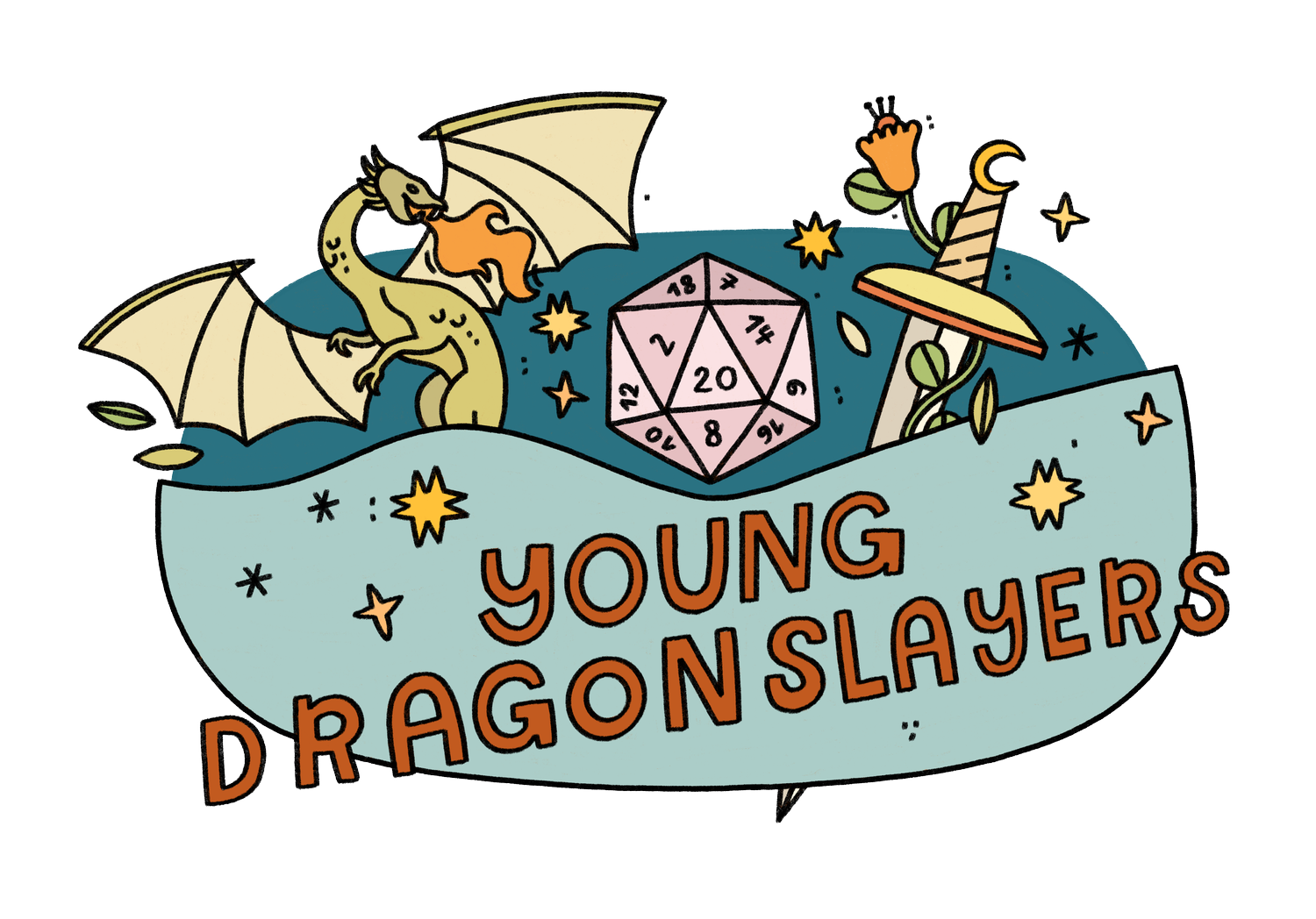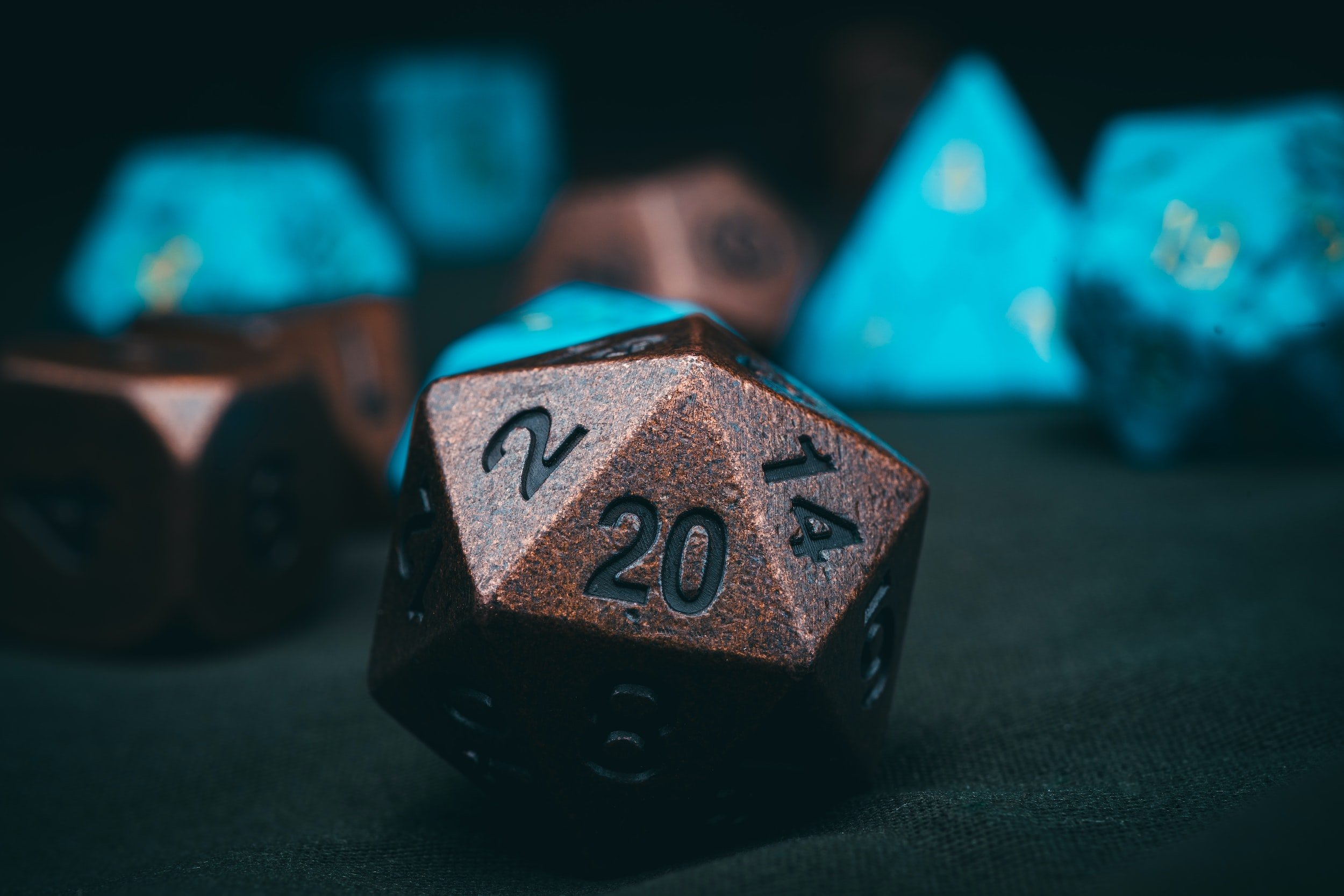What is Dungeons & Dragons? Here’s What You Need to Know About the Game.
Wondering if D&D is something that you (or your child) would be into? Trying to figure out the difference between a bard and a barbarian? Just finished binge watching the latest season of Stranger Things, and you’re ready to join a Hellfire Club of your own? Say no more. You’ve come to the right place.
You can join our trusty DM, Sergio, in the video above as he takes you on an introductory journey through the world of D&D. You’ll learn the basic rules, see some examples of game play, and get a sense for what it’s like to play with us at Young Dragonslayers™. Oh, and The Rock is involved. Like, more than you’d expect.
If you’re more of a reader, I’ll break down the main ideas below:
Ok, So What Is D&D, Anyway? Here’s a Basic Definition.
Dungeons and Dragons, also known as D&D or DND, is a collaborative storytelling game. You take on the role of an imaginary character and go on an adventure with your fellow players, using a set of rules as your guide. You can do things like explore, fight, and talk to other people in the world. There’s no winning or losing: your only goal is to have fun.
If you’ve seen or heard anything about D&D before, you probably imagine it taking place in a medieval-ish fantasy world, like what you might see in Lord of the Rings. D&D can be like that, but it doesn’t have to be! You can use those rules to explore any setting that interests you, whether that’s the Wild West, a Victorian mansion, or even a Studio Ghibli-style adventure.
Your character can be whoever you want them to be. Pretty much any kind of magical, mythical being you can imagine is playable in D&D. There’s no rule that says your character has to be the same gender as you, or share your personality traits. You might choose to play a character who is a lot like you, or the total opposite. You could even base your character on a celebrity, like, for example…Dwayne “The Rock” Johnson. See? I told you he was a part of this.
The Role of the Dungeon Master
The world you’re playing in—whether it’s a haunted house or a broken spaceship—is controlled by someone known as the Dungeon Master, or DM. If you’re playing a character in the story, you’re kind of like an actor. In this analogy, the DM would be the director.
It’s the DM’s job to set the scene. They describe what you’re seeing around you, take on the roles of any other non-player characters in the story, and keep the story moving. They also come up with ways to create conflict in your story. This might sound kind of mean, but it’s not because they’re trying to trick you. A story without conflict is really boring. You need problems to solve and monsters to fight to make it interesting.
An Imagination-Based Game
Everything that takes place in D&D happens in your imagination. The DM describes the world and what’s happening, and you tell them how your character would react. Almost all of D&D is played verbally—you’re telling the story of what happens and picturing it in your mind.
This doesn’t mean you have to be some creative genius in order to play D&D. Some people have a harder time visualizing things in their imagination than others. You and your DM can use maps and images for reference, or reference things from pop culture to get your idea across. For example, instead of going all out trying to create and describe a fancy treehouse, you can just say “it looks like the treehouse from Adventure Time.”
If this all sounds like your cup of tea, you might enjoy playing some online D&D with us over here at Young Dragonslayers™. You can click the button below to learn about our upcoming games.
Creating Your DND Character
We’ve already talked a little bit about how there are nearly limitless options for your D&D character. One of the most fun parts of D&D is that you can be whoever you want to be. If you’re a shy person who wants to practice being outgoing, you can do that! Your character can be old or young. They can be male, female, or nonbinary. It’s up to you!
You create your character’s personality on your own, but what they can do is largely decided by their race and class. “Race” in D&D isn’t really used the way we think of race. It’s more like a species, and includes options like human, elf, orc, and many others. Each one has a small perk, like the ability to fly or breathe fire.
Your “class” is sort of like your character’s superpower. It’s what makes your character unique. Each class has a set of skills they can use to help the party on their adventure. Here's a super-quick, very simple rundown so you can get an idea of how classes work:
Artificers are master inventers and builders
Bards are musicians who cast their magic with their art
Barbarians are combatants who get so mad that they fight extra well (like the Hulk)
Clerics are healers, and usually devoted to some higher power
Druids are one with nature, and they can turn into animals
Fighters, well…fight. They’re good, capable, all-around combatants
Monks are martial artists: their body is their weapon
Paladins are warriors who are devoted to a cause or belief, like love or revenge
Rangers are a bit like Robin Hood, in that they hang out on the edges of society and fight from afar
Rogues are also like Robin Hood, in that they’re sneaky and good at stealing
The last 3 classes are all magic users, but they vary in where their magic comes from and how they use it:
Sorcerers are born with it; their magic is innate
Warlocks made a deal with a god or a demon
Wizards studied to learn their magic, those absolute nerds
There you have it! A super basic look at character creation.
How to Play D&D: Game Mechanics
The main rule—also called a mechanic—in D&D is pretty simple. Any time you want to accomplish a task that is at least somewhat difficult, you roll a 20-sided die called a D20. The higher you roll on the dice, the more likely you are to achieve your goal.
The game is based on luck. But, each character also has skills that they’re particularly good or bad at, thanks to their race or class. You’ll use a document called a character sheet to track all this information for you. On your character sheet, you’ll find modifiers that add or take away a few points from your dice roll depending on your character’s skill in that area.
For example, if your character is The Rock, he’s probably going to be really good at acting. The math on his character sheet will reflect that, making it more likely he’ll succeed on tasks that require performance. Let’s say, in-game, you want The Rock to go to an improv class where he wants to impress his classmates. You might roll a 12 on the dice, which isn’t very good, but with his +4 modifier you can turn that into a 16, which is enough to impress his peers.
If you look at a character sheet, it can look pretty complicated. And, well, it is. But the good news is you don’t have to have every detail memorized before you start playing D&D. In our games at Young Dragonslayers™, we use a virtual character sheet that does all the adding and subtracting for you, so it’s pretty easy: you just click what you want to do, and the dice rolls automatically.
As long as you understand this rule about D20 rolls and modifiers, your DM can explain the rest as you play. There’s only one other big thing that’s helpful to know about in advance, and that’s combat.
How Combat Works in D&D
When you start a fight in D&D, some new rules come into play. So, let’s take a very quick look at how the mechanics in combat work. Let’s say your character, The Rock, is on the roof of a building adjacent to another tall building, and beneath them is a bunch of fire. He’s being chased by some guards. Here you can choose to either or fight, and you choose to fight.
The first thing you need to do is roll for initiative. This is how players decide who gets to go first in combat. To do this, you roll your 20-sided die and then add your initiative modifier, which you can find on your character sheet. Since we use a virtual character sheet in our games, you just click the word “Initiative” and the rest happens for you. Higher rolls go first, so the higher your roll is, the earlier you will be in the initiative order.
Let’s say the Rock rolls a 12. He’s right in the middle of the initiative order, with 2 enemies taking turns before him and one taking a turn after. Next, on each turn, you need to make some kind of attack on one of your opponents. You could use a weapon, a spell, or just throw a good old-fashioned punch. You’ll roll the dice two times to do this. First, you’ll roll a D20 to see if your attack hits your opponent. Next, you’ll roll another die to see how much damage you do.
Eventually, something will happen that ends combat, at which point you’re out of initiative order and these rules go away…until next time.
So There You Have It. That’s What D&D Is All About!
Hopefully this blog and video answered some of your burning questions about the basics of D&D. If you’re still a little confused, that’s okay. The best way to learn about D&D is through playing the game.
If you’re looking for a place to do that, we can help! We offer Intro Classes for kids and teens online that help you learn the ropes and give you a chance to try out playing the game in a group of friendly beginners.
If you enjoy that, you’re also welcome to join one of our weekly groups for kids or teens, where you can hang out every week like-minded people and go on fantastical adventures together.
You can contact us here to sign up for a game, and subscribe to our YouTube channel for more D&D content.


